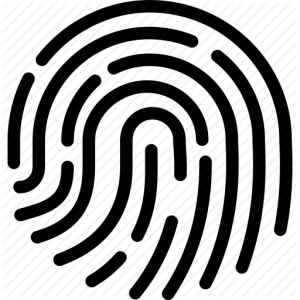N=1 has turned into a symbol, a representation meaning to treat a person as an individual, as a unique complex being that has personal factors and history that make them who they are. (see the mountain stream analogy via Aaron Swanson.) When we speak about treating the person in front of us we can say “N=1.”
This is being championed by many groups. The “Pain Science crowd” certainly incorporates individualism and biopsychosocial constructs. Cause Health is bringing awareness, and I’ll also recommend Neil Maltby’s blog: Becoming More Human.
Here is a slide from the PT Brain Trust’s recent presentation at the ODU Alumni CEU Course.
The main concept here is to keep an N=1 approach when thinking of your patient, but an N=100 approach when reading research.
In other words, don’t use N=1 research (case studies, Tupperware party techniques) if you want to be effective. Use N=100. Meaning properly powered, large ‘N’ studies that represent certain populations to choose your treatments for effectiveness.
Then apply this to your patient. N=1.
If you use N=100 for your patient, you will miss seeing them as an individual. Do not try to make them like everyone else, like a population. You will run into problems and perhaps waste your time trying to make their toe-out angle symmetrical, their clavicles level, and like everyone else’s. Biomechanics may indeed play a large role in a patient, but remember it’s for that person, and their goals.
So remember: N=1 for your patient, N-100 for your research… and off you go!
–Matt D




I ran over to Neil’s blog after I read this, so thank you for that! I am a student wanting to be a PT one day, not yet in PT school, and never knew about the whole n=1 vs n=100 perspective. Learned something new! Thanks :)) –Jess
LikeLike
Glad you found the content meaningful! And also happy to share Neil’s blog- he has fantastic patient centered content. Good luck in pursuing PT!
LikeLiked by 1 person
Thank you Matt! Looking forward to your future posts.
LikeLike
Hi Matt:
While I agree that there are small degrees of asymmetry in the body, From what I observe, gross symmetry is the rule. Eye sight, hearing, shoe size, gross ROM, and gross strength are generally symmetrical. When you see a difference in one side vs the other, the first question is: How long has it been that way? And then: Is there dysfunction? With the observation of toe out, isn’t assuming asymmetry is “normal” n=100? Then, treating common restrictions and see if change occurs is n=1. Same issue with the elevated clavicle, maybe see if the rib cage is pushing it up. Every body part has an optimal way of working. Making sure the parts related to the patient’s complaint are working correctly as they can will get you patient better.
Cheers, Brian
LikeLike
Hey Brian, thanks for the reading. I think you’ve got the idea down perfect. It’s a bit of the “chicken vs the egg” in what came first. Was this physical difference present pre or post pain/injury?
Is it related to current complaints?
Will changing it (attempting to change it) change patient sensation? (interestingly pushing and moving often does change patient sensation, even if the answers to the prior questions are “pre” and “no”).
Finding a connection between our personal professional observation and the patient’s body, goals, history and complaints is the trick. The concept of realizing N=1 in each encounter is the focus.
I have made the argument before that each joint should be moving at optimal (the field can argue here) ranges, contractile tissue should contract well and with control, etc. See here THE role for PTs.
Many in the field have not reached this understanding, they are stuck on the biomedical “it must do things to you to fix you” mindset. I find that remembering N=1, during the interaction, is helpful in stearing the encounter in the right direction.
As always- thanks for the comments-
-Matt D
LikeLike
Hi Matt:
I’m glad that you are finally coming around to my way of thinking (picture here a smiling/winking emogi). The next question is more complex: What came first, fried chicken or omelets? PT’s need to get to the point where we are not treating pain. If you are only treating the location of the pain, then you are still at the basic chicken and egg level of understanding. One must look at the interdependence and interactions of various body parts. For example, you can often “cure” plantar facsiitis with postural re-education and gluteal retraining. Beyond the evaluation, you may not even have to touch the foot. This works because you remove the excess workload placed on the arch of the foot by their poor posture and lack of activity in their butt muscles. Treat dysfunction not pain.
Cheers again, Brian
LikeLike
Pingback: This is the person you are trying to help | PTbraintrust